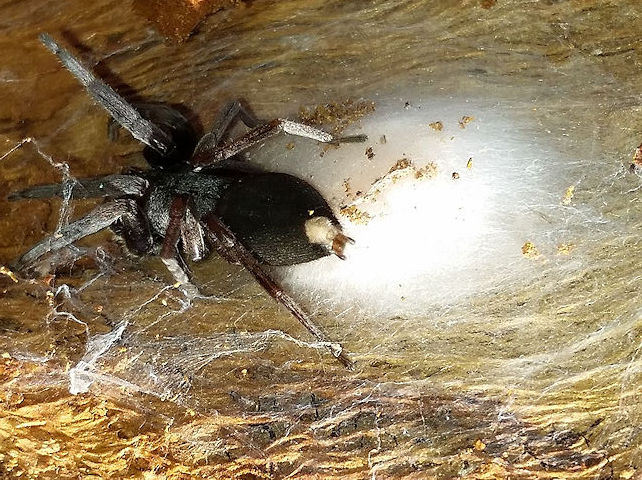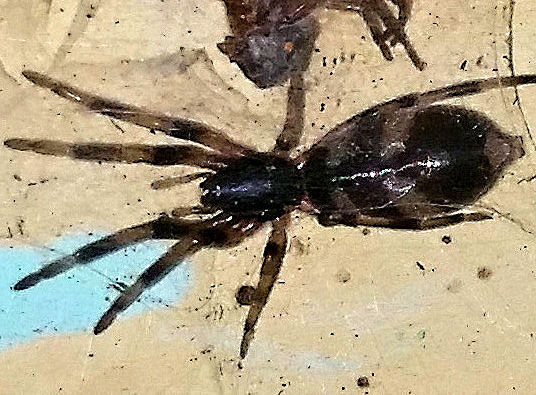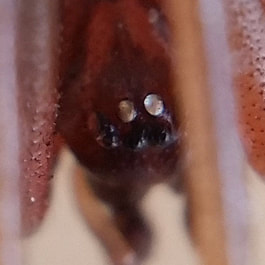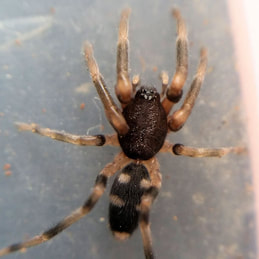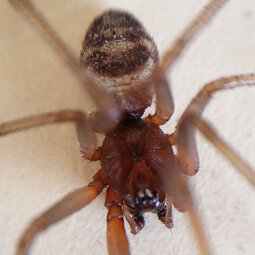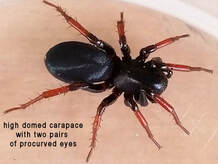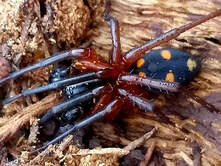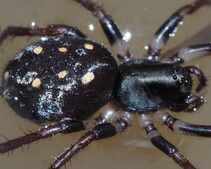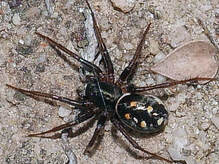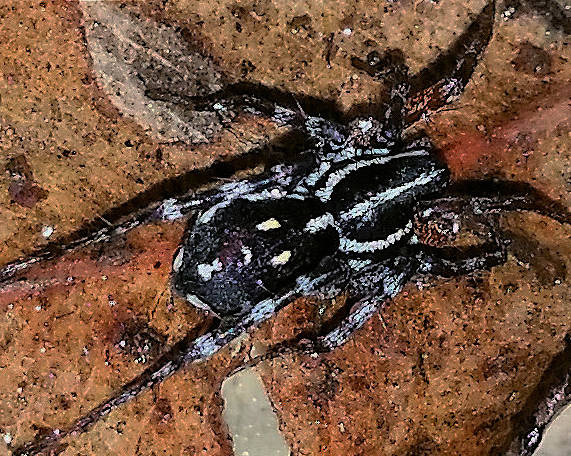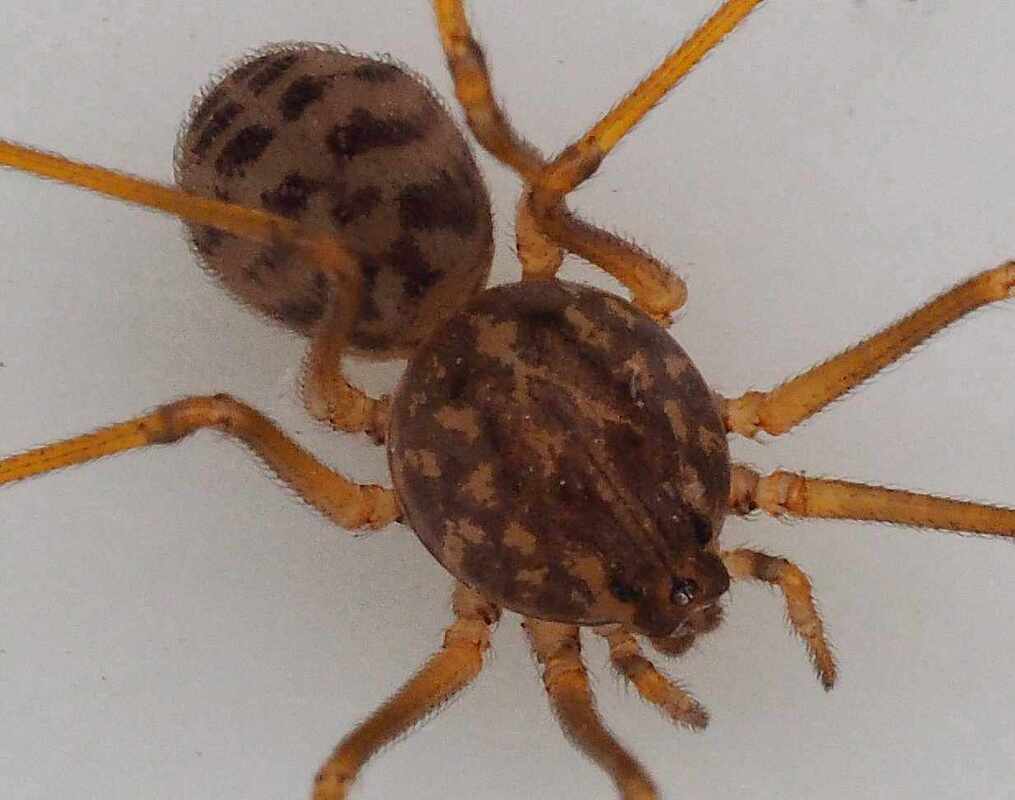White-tailed and Similar Shaped Spiders
These spiders mostly have elongated bodies with a tapering to cigar-shaped abdomen and hunt on the surface or underneath bark and rocks
1 White-tailed spiders (family Lamponidae) are night-active, generally dark coloured ground-dwelling spiders with a conspicuous white spot at the back of their abdomen just above the spinnerets. They hunt other spiders around the house such as redbacks, daddy longlegs and black house spiders. During the day they hide in a silken retreat under bark or stones. Eggsacs are placed in a web retreat and are usually semicircular or oval and attached to surrounding material.
They are the most likely of this group to be found in houses. Lamponidae and Gnaphosidae families have two silvery opaque median posterior (top central) eyes. More information; Foxypress- The truth about white-tailed spiders; Myrmician- Lampona
They are the most likely of this group to be found in houses. Lamponidae and Gnaphosidae families have two silvery opaque median posterior (top central) eyes. More information; Foxypress- The truth about white-tailed spiders; Myrmician- Lampona
2 Eilica, Ceyerda genera in family Gnaphosidae (Ground Spiders) Night-active, vagrant hunters that have a silky retreat where they hide during the day and deposit their eggsac.They apparenty eat meat ants and can be found near nests. Lamponidae and Gnaphosidae families have two silvery opaque median posterior (top central) eyes. More information: find a spider guide-Eilica sp.
3 Ant-eating spiders (family Zodariidae) subfamily Zodariinae) are largely ant or termite eaters that live near or in their nests. They often have bright white, yellow, or red spots around a dark abdomen. They hunt in day or night and often mimic ant behaviour by holding up their front pair of legs to mimic ant antennae. Strong spiny legs. Local spiders have a typical high rounded carapace with two strongly procurved (curved forward) rows with four eyes at the front. More information
Myrmician-zodariidae
Myrmician-zodariidae
|
4 Swift spiders (family Corinnidae) are very fast moving and active in the day. Eight eyes in two rows with the posterior eye row procurved. Nyssus sp have black and white markings, and are frequently seen darting around between clumps of leaf litter. More information Myrmician -Corinnidae
|
5 Spitting spider( Scytodidae family) are reclusive night hunters that prefer cracks and crevices and occur around houses. They spit venom on to their prey, and are characteristially orange and spotty.
More information |
6 Sac spiders (Clubonidae family) are night hunters that generally hide in sac-like web retreats in peeling eucalypt bark during the day. They are mostly long-legged, fragile looking, pale to cinnamon coloured spiders. None have been collected in Foxes lair yet. More information:
Myrmician-Clubonidae
Myrmician-Clubonidae
